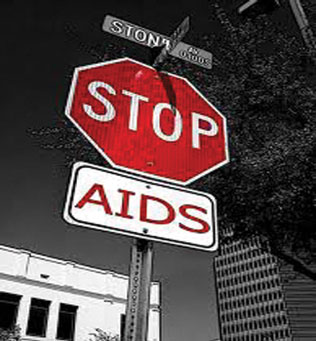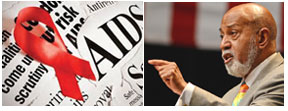

National Black HIV/AIDS Awareness Day
By Maya Rhodan
WASHINGTON, D.C. (NNPA) — Thursday, Feb. 7, will be observed as National Black HIV/AIDS Awareness Day. And according to activists, there is plenty that African-Americans need to observe.
There are more than 1.1 mill-ion people living with HIV/AIDS in the United States, including more than $510,000 African-Americans.
“It has been 31 years since the Centers for Disease Control made the public aware of what HIV/AIDS is and we’re still seeing Black community disproportionately impacted,” says C. Virginia Fields, the president and CEO of National Black Leadership Commission on AIDS ( NBLCA).
Although Blacks represents only 12 percent of the U.S. population, they account for 44 percent of new cases of HIV every year and 44 percent of those living with HIV.
According to the CDC:
· Black women account for 64 percent of all new AIDS among women; most African-American females are infected through heterosexual relations;
· Although Black teens represent only 15 percent of all U.S. teenagers, they account for 70 percent of all New AIDS diagnoses among teens;
· The rate of diagnosis of AIDS among adults was the highest among Black gay and bisexual men. Younger men (13-29) accounted for 60 percent of new HIV infections among Black gay and bisexual men, compared to 28 percent among Whites.
“We’re looking at young population—of gay men and young Black women, mainly of child bearing age, who are most impacted,” says Fields, who is spending the week in Tampa, Fla. to help address local issues surrounding HIV. “They did not grow up seeing the horrors of HIV/AIDS impact in early 80s, late 70s and into the 90s. They did not see the fights to bring the attention to the forefront, and absence of that feeds into this sense of complacency.”
In 2008, HIV was the third leading cause of death for African American women and the sixth leading cause of death for Black men ages 25-44.
Adds Fields, “People believe that all they have to do is pop a pill and they will get cured. There is no cure yet.”
Although medical advances now allow HIV positive people to maintain a higher quality of life longer than ever before, Fields is right—there is no cure.
Despite the fact that those who get treated for the virus can significantly reduce the likelihood of transmitting it to others, 72 percent of those living with HIV are not keeping the virus under control through treatment.
Act Against AIDS Leader-ship Initiative, a partnership between the CDC and minority organizations, and the Black AIDS Institute, based in Los Angeles, believe the Affordable Care Act will help lessen the disparities between those in and out of care while living with HIV.
“The full implementation of the Affordable Care Act will ensure that HIV-positive people have access to the care and treatment they need to live full lives,” says Leisha McKinley-Beach, the director of stake-holder engagement at the Black AIDS Institute.
Implementing the Afford-able Care Act in its entirety is, however, just one of the ways the Black AIDS Institute believes the African-American community and all communities affected by the virus can really work toward ending the epidemic.
In their latest report, “Light At The End Of The Tunnel: State of AIDS In Black America,” released on National Black AIDS Day, the Black AIDS Institute lays out a five-point plan they believe will help stop the virus in its tracks.
Plans include retooling African American organizations to better address the evolving needs of those living with and fighting against contracting HIV and AIDS and increasing the demand for treatment.
One major point recommends supporting those living with the disease to come out and disclose their status.
“A part of that disclosure is having people who are HIV positive to share their stories and help maintain a support system,” says McKinley-Beach. “We also know that those who disclose are more likely to be in treatment, which makes them less likely to transmit the disease.”
In an effort to increase disclosure, the Black AIDS Institute has also developed “Positively Out,” a program to help people living with the disease get the tools they need to know when and who to tell their status.
Despite all the efforts to educate and uplift, HIV still remains a serious issue for the African American community, one that can’t be deemed important just one day out of the year.
In a December 2012 CDC report, the rate of incidence among African American women had decreased by 21 percent, although among Black men who have sex with men, the rate had gone up by 22 percent.
“It doesn’t mean that we need to stop being diligent, doesn’t mean we should take our eyes off the ball,” says Fields. “There’s much more work to do and each one of us can do a part in taking on that work.”




Be the first to comment